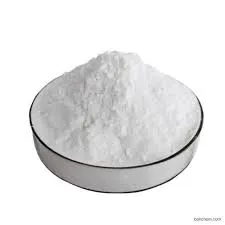- Afrikaans
- Albanian
- Amharic
- Arabic
- Armenian
- Azerbaijani
- Basque
- Belarusian
- Bengali
- Bosnian
- Bulgarian
- Catalan
- Cebuano
- Corsican
- Croatian
- Czech
- Danish
- Dutch
- English
- Esperanto
- Estonian
- Finnish
- French
- Frisian
- Galician
- Georgian
- German
- Greek
- Gujarati
- Haitian Creole
- hausa
- hawaiian
- Hebrew
- Hindi
- Miao
- Hungarian
- Icelandic
- igbo
- Indonesian
- irish
- Italian
- Japanese
- Javanese
- Kannada
- kazakh
- Khmer
- Rwandese
- Korean
- Kurdish
- Kyrgyz
- Lao
- Latin
- Latvian
- Lithuanian
- Luxembourgish
- Macedonian
- Malgashi
- Malay
- Malayalam
- Maltese
- Maori
- Marathi
- Mongolian
- Myanmar
- Nepali
- Norwegian
- Norwegian
- Occitan
- Pashto
- Persian
- Polish
- Portuguese
- Punjabi
- Romanian
- Russian
- Samoan
- Scottish Gaelic
- Serbian
- Sesotho
- Shona
- Sindhi
- Sinhala
- Slovak
- Slovenian
- Somali
- Spanish
- Sundanese
- Swahili
- Swedish
- Tagalog
- Tajik
- Tamil
- Tatar
- Telugu
- Thai
- Turkish
- Turkmen
- Ukrainian
- Urdu
- Uighur
- Uzbek
- Vietnamese
- Welsh
- Bantu
- Yiddish
- Yoruba
- Zulu
10 月 . 15, 2024 05:22 Back to list
Potential Side Effects of Buparvaquone Injection You Should Be Aware Of
Understanding the Side Effects of Buparvaquone Injection
Buparvaquone is an innovative antiprotozoal agent primarily utilized in veterinary medicine, particularly for the treatment of certain infections in cattle and other livestock. It is part of a growing class of medications designed to combat parasitic diseases that can significantly affect animal health and agricultural productivity. However, like many medications, buparvaquone injections can have side effects that both veterinarians and animal owners should be aware of before administering the treatment.
Mechanism of Action
Before discussing the side effects, it’s essential to understand how buparvaquone works. Buparvaquone is a hydroxynaphthoquinone that interferes with the electron transport chain in protozoan parasites, leading to their death. It is particularly effective against the protozoan responsible for diseases such as theileriosis, which can lead to severe health issues in cattle. Despite its effectiveness, the potential side effects must be managed carefully to ensure the overall health and well-being of the treated animals.
Common Side Effects
1. Injection Site Reactions One of the most frequently observed side effects of buparvaquone injections is localized irritation at the injection site. This can manifest as swelling, redness, or tenderness. Although these reactions are generally mild and resolve on their own, monitoring the injection site for signs of severe reactions is crucial.
2. Gastrointestinal Distress Some animals may experience gastrointestinal issues, such as diarrhea or vomiting, after receiving buparvaquone. These symptoms may be associated with the body’s response to the medication and the underlying infection. It is vital for pet owners to ensure that their animals remain hydrated and comfortable during this time.
3. Allergic Reactions Though relatively rare, allergic reactions to buparvaquone can occur. Symptoms may include difficulty breathing, swelling of the face or limbs, and hives. In the event of an allergic reaction, immediate veterinary attention is required to address the issue promptly.
4. Neurological Effects In some cases, neurological symptoms such as lethargy, uncoordinated movement, or seizures may occur. These symptoms can be distressing for both the animal and its owner. If any neurological effects are observed, it is crucial to consult a veterinarian as soon as possible.
buparvaquone injection side effects

5. Anemia Buparvaquone can occasionally lead to a decrease in red blood cell production, resulting in anemia. Symptoms might include weakness, lethargy, and pale gums. Regular blood checks may be necessary for high-risk animals to monitor their health during treatment.
Risk Factors
Certain factors may increase the likelihood of experiencing side effects from buparvaquone. Animals that are already immunocompromised, have underlying health conditions, or are receiving multiple medications may be at a higher risk. It is also advisable to assess whether the animal is pregnant or lactating, as this may affect both the mother and her offspring.
Management of Side Effects
To mitigate potential side effects, veterinarians often weigh the benefits and risks of buparvaquone treatment. Close monitoring during and after the injection can help identify any adverse reactions early. If side effects do occur, supportive care may be necessary, which can include hydration therapy, anti-nausea medications, and, in some cases, emergency interventions for more severe reactions.
In the case of mild side effects, veterinarians may recommend symptomatic treatments and observation. However, if severe reactions are observed, it is critical to stop the treatment and seek immediate veterinary assistance. Communication between the veterinarian and the animal owner is vital to manage potential side effects effectively.
Conclusion
While buparvaquone injection can be an essential tool in treating protozoan infections in livestock, awareness of side effects is crucial for successful outcomes. By understanding the potential reactions that can arise from buparvaquone treatment and keeping close communication with veterinary professionals, animal owners can help ensure their animals remain healthy and thrive through their recovery process. Always consult a veterinarian before initiating any treatment to understand the benefits and risks associated with the medication.
-
The Power of Radix Isatidis Extract for Your Health and Wellness
NewsOct.29,2024
-
Neomycin Sulfate Soluble Powder: A Versatile Solution for Pet Health
NewsOct.29,2024
-
Lincomycin Hydrochloride Soluble Powder – The Essential Solution
NewsOct.29,2024
-
Garamycin Gentamicin Sulfate for Effective Infection Control
NewsOct.29,2024
-
Doxycycline Hyclate Soluble Powder: Your Antibiotic Needs
NewsOct.29,2024
-
Tilmicosin Premix: The Ultimate Solution for Poultry Health
NewsOct.29,2024













